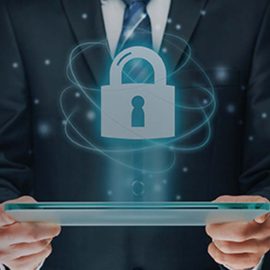Cybersecurity vulnerabilities can pop up at any time, and you may not even know it. That’s especially true with organizational growth and new people. It’s also true when we adopt new systems and ways of working, like remote work.
As new people, processes, and ways of working are introduced, your key technology assets can become more vulnerable. Issues like data breaches and cyberattacks can arise when organizations aren’t careful with their systems, software, and data. These are assets that need to be managed and protected, but only 39.7% of organizations manage their data as a business asset.i
Importantly, those are large organizations. It’s safe to say that with fewer financial and human resources at their disposal, smaller organizations are likely worse off.
There’s something any organization can do to improve its overall cybersecurity: understand its most important technology assets from top to bottom, including prioritizing them by how critical they are to operations.
This identifies your organization’s technological “crown jewels” and addresses one of the most common gaps in security protections. All too often, there is a gap in knowledge between the IT teams deploying security protections and the operational departments that need to be responsible for prioritizing what to secure. Once you’ve identified the most important components, you’re in a better position to manage and protect them.
The Identify Phase
A comprehensive organizational IT assessment can help identify your organization’s critical technology assets. At Rehmann, we partner with key members of your operational teams to accomplish this, making the process as granular as needed to meet your needs.
Here are seven key questions this phase will help answer for each asset:
- What is the asset?
- Where is it stored?
- What are the current security controls?
- Are the current security controls appropriate?
- How can security improve?
- What backup policies are in place?
- What factors affect mediation costs?
All of your identified organizational data assets are put through a risk assessment to identify the likelihood of an attack and potential impacts of something happening to the asset. They’re then given a protection priority score, highlighting their overall importance to the organization.
Backup and Recovery
A key component is data backup and recovery. Some data is likely to be lost in a breach – how much can you afford to lose? And how quickly can things get back online? We’ll discuss how you use each of your critical assets to determine susceptibility to different scenarios, like the accidental deletion of critical data, and the potential impacts. This helps make sure you have the right backup plans in place so you can rest easy knowing you have appropriate protection in case you lose data during a cyber incident. This process spotlights cybersecurity vulnerabilities and offers recommendations on appropriate controls to apply.
Once you complete the Identify workshop, you’ll have a prioritized list of your organization’s most critical technology assets, the security controls around each one, and insight into how to improve security.
Don’t Operate in the Dark
Gain vital visibility into your most important technology. Working through the Identify phase provides improved insight around security, your IT environment’s vulnerability, and the potential impacts of recovery/mediation efforts. It helps leaders at your organization better understand the business systems and data assets that make your organization go, including how critical they are to operations.
Without this information, an organization is operating somewhat blindly. Of course, that can lead to bigger, more problematic issues like lost productivity. Start protecting your organization today.
i NewVantage Partners Special Report, January 2022, “Data and AI Leadership Executive Survey”






